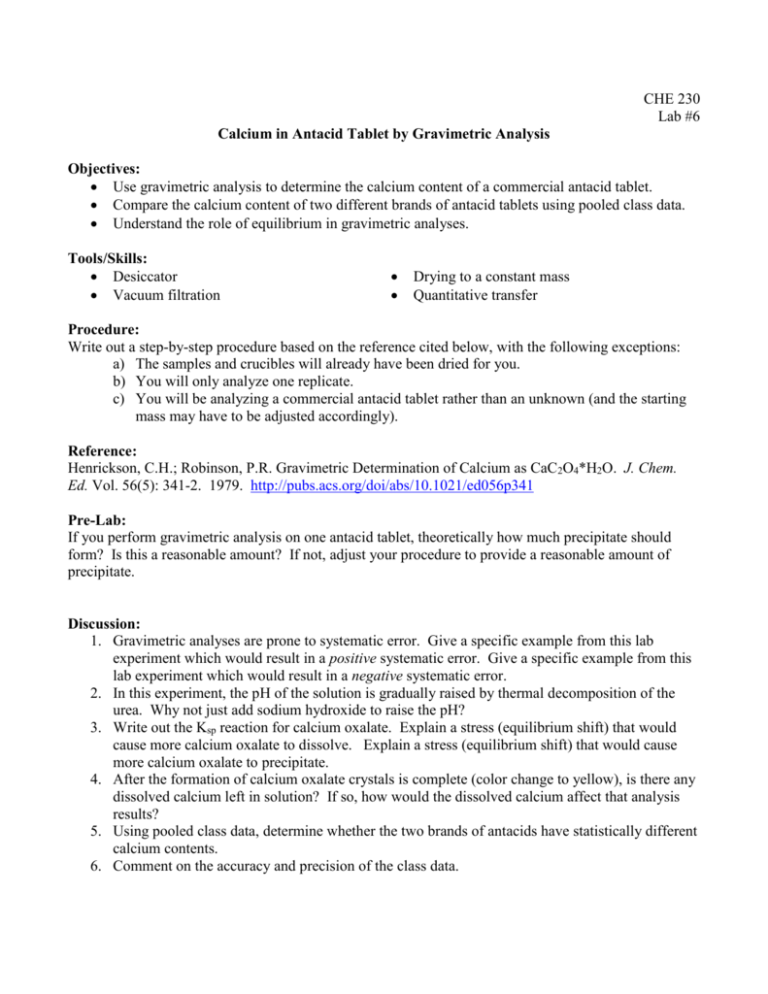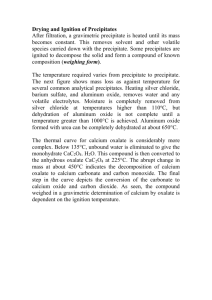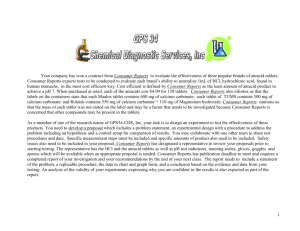Lab #6 - Gravimetry
advertisement

CHE 230 Lab #6 Calcium in Antacid Tablet by Gravimetric Analysis Objectives: Use gravimetric analysis to determine the calcium content of a commercial antacid tablet. Compare the calcium content of two different brands of antacid tablets using pooled class data. Understand the role of equilibrium in gravimetric analyses. Tools/Skills: Desiccator Vacuum filtration Drying to a constant mass Quantitative transfer Procedure: Write out a step-by-step procedure based on the reference cited below, with the following exceptions: a) The samples and crucibles will already have been dried for you. b) You will only analyze one replicate. c) You will be analyzing a commercial antacid tablet rather than an unknown (and the starting mass may have to be adjusted accordingly). Reference: Henrickson, C.H.; Robinson, P.R. Gravimetric Determination of Calcium as CaC2O4*H2O. J. Chem. Ed. Vol. 56(5): 341-2. 1979. http://pubs.acs.org/doi/abs/10.1021/ed056p341 Pre-Lab: If you perform gravimetric analysis on one antacid tablet, theoretically how much precipitate should form? Is this a reasonable amount? If not, adjust your procedure to provide a reasonable amount of precipitate. Discussion: 1. Gravimetric analyses are prone to systematic error. Give a specific example from this lab experiment which would result in a positive systematic error. Give a specific example from this lab experiment which would result in a negative systematic error. 2. In this experiment, the pH of the solution is gradually raised by thermal decomposition of the urea. Why not just add sodium hydroxide to raise the pH? 3. Write out the Ksp reaction for calcium oxalate. Explain a stress (equilibrium shift) that would cause more calcium oxalate to dissolve. Explain a stress (equilibrium shift) that would cause more calcium oxalate to precipitate. 4. After the formation of calcium oxalate crystals is complete (color change to yellow), is there any dissolved calcium left in solution? If so, how would the dissolved calcium affect that analysis results? 5. Using pooled class data, determine whether the two brands of antacids have statistically different calcium contents. 6. Comment on the accuracy and precision of the class data.







